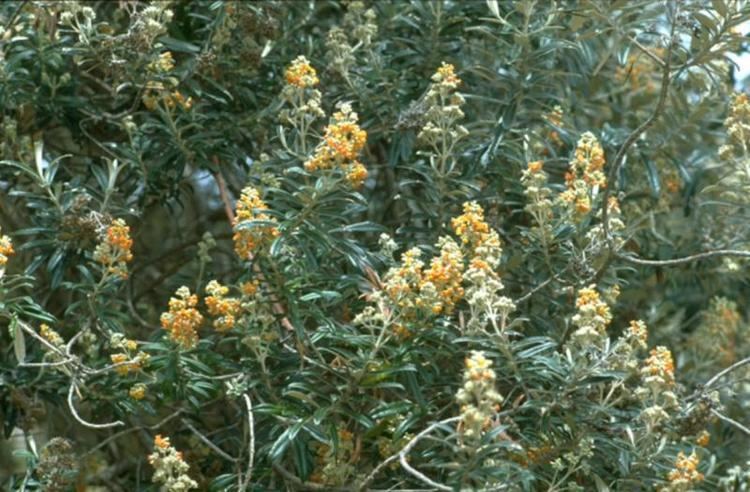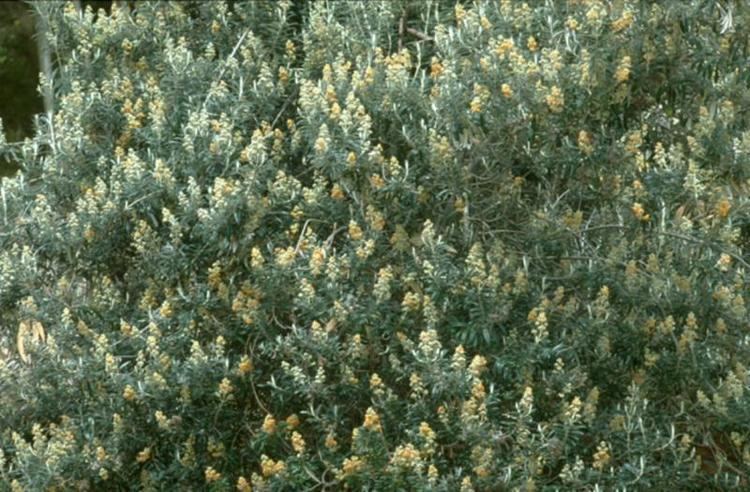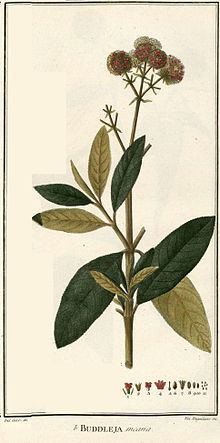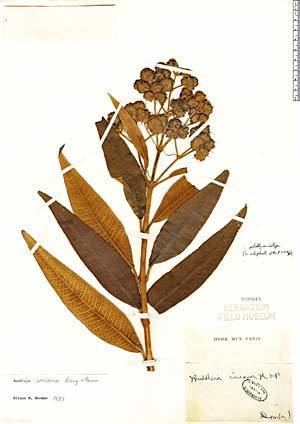Family Buddlejaceae | Genus Buddleja | |
 | ||
Similar Buddleja coriacea, Polylepis incana, Polylepis racemosa, Polylepis, Alnus acuminata | ||
Buddleja incana (kiswar in Quechua, kiswara in Aymara, hispanicized spellings quishuar, quisoar, quisuar, names which are also applied for other Buddleja species, however) is endemic to Bolivia, Peru, Ecuador and Colombia, growing in canyon bottoms along streams at elevations of 2,700 – 4,500 m. The species was first named and described by Ruiz and Pavon in 1798.
Contents

Description

B. incana is a dioecious tree or shrub, 4 – 15 m tall, the trunk < 50 cm at the base, the bark brownish and furrowed. The branches are subquadrangular and tomentose, and form a rounded crown. The coriaceous leaves are mostly oblong, 7 – 21 cm long by 1 – 5 cm wide, the upper surface glabrescent, often bullate or rugose, the lower white or yellowish tomentose. The yellow to orange paniculate inflorescences have 2 – 3 orders of leafy-bracted branches bearing heads 1 – 1.5 cm in diameter, each with 15 – 40 flowers, the corollas 3 – 4 mm long. Ploidy: 2n = 76. [1]
Uses
The leaves are used in folk medicine against toothache and as diuretic.



